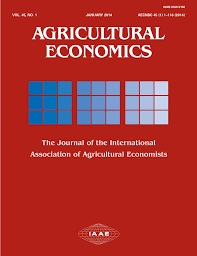
Lo más reciente
Given the importance of climate change and the increase of its severity under extreme weather events, we analyze the main drivers of high food prices in Colombia between 1985 and 2020 focusing on extreme weather shocks like a strong El Ni˜no.We estimate a non-stationary extreme value model for Colombian food prices. Our findings suggest that perishable foods are more exposed to extreme weather conditions in comparison to processed foods. In fact, an extremely low precipitation level explains only high prices in perishable foods. The risk of high perishable food prices is significantly larger for low rainfall levels (dry seasons) compared to high precipitation levels (rainy seasons). This risk gradually results in higher perishable food prices. It is non linear and is also significantly larger than the risk related to changes in the US dollar-Colombian peso exchange rate and fuel prices. Those covariates also explain high prices for both perishable and processed foods. Finally, we find that the events associated with the strongest El Ni˜no in 1988 and 2016 are expected to reoccur once every 50 years.

